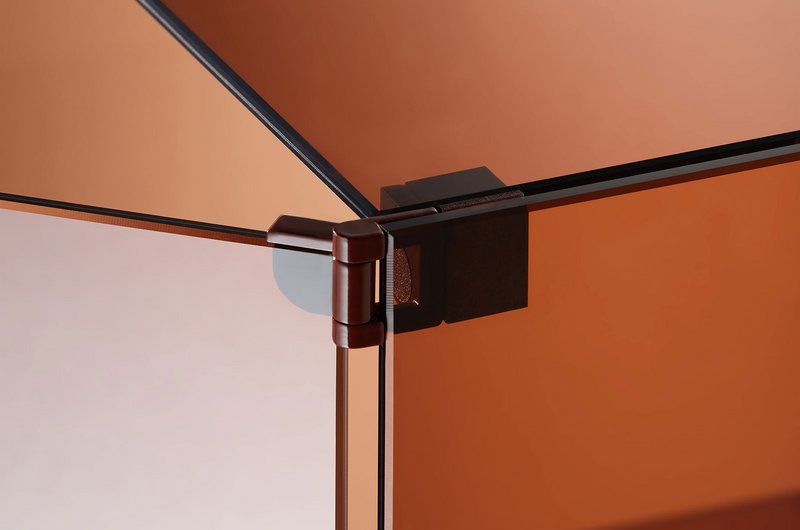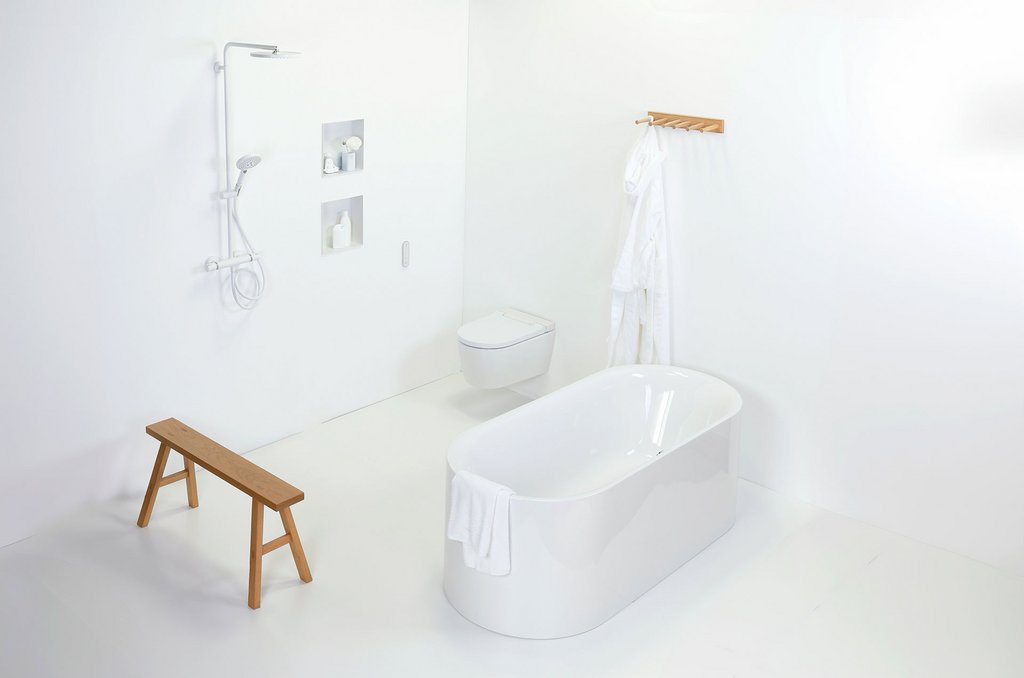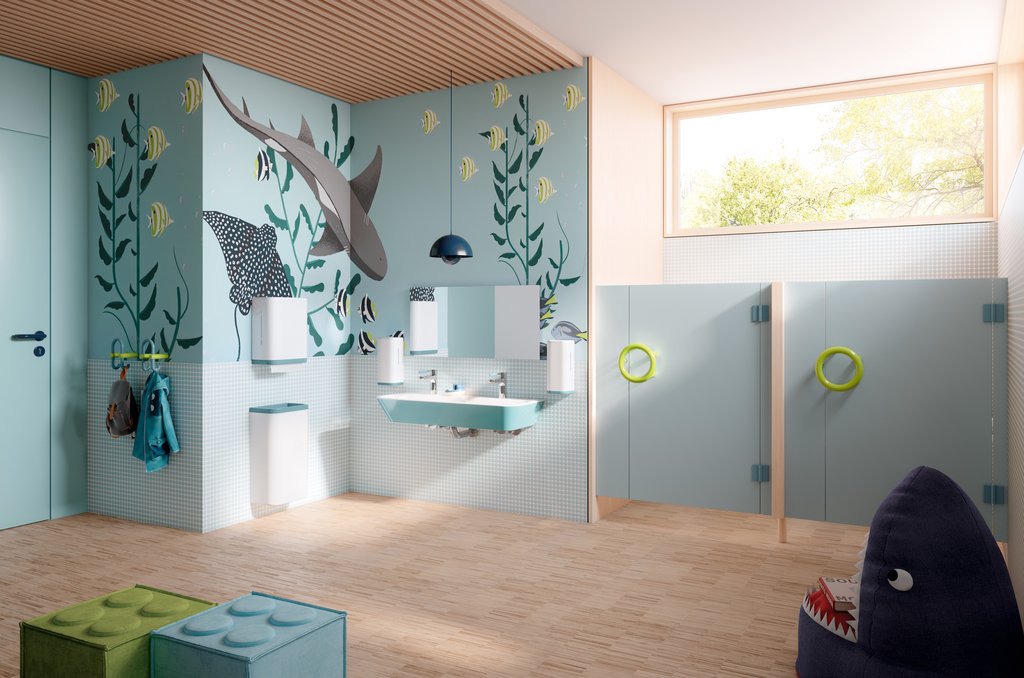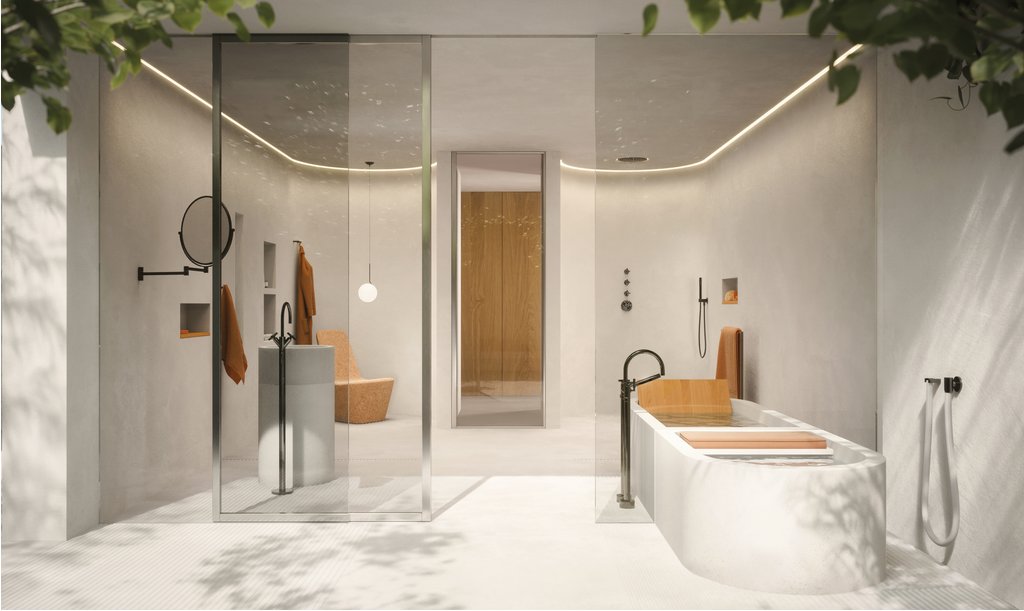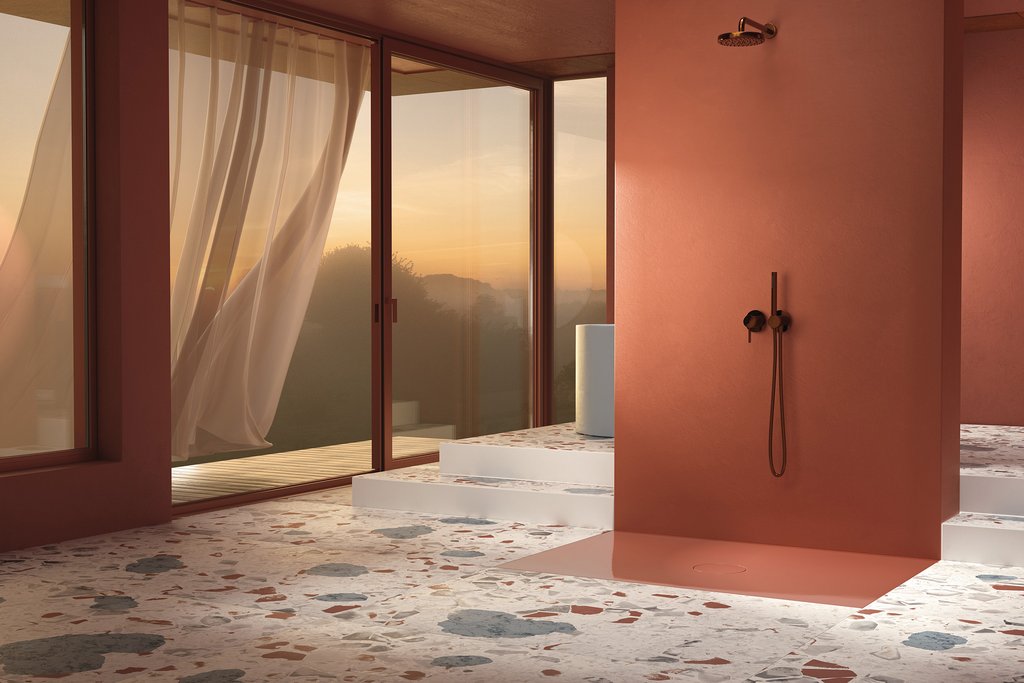rgb by Burgbad: furniture made of colour and light
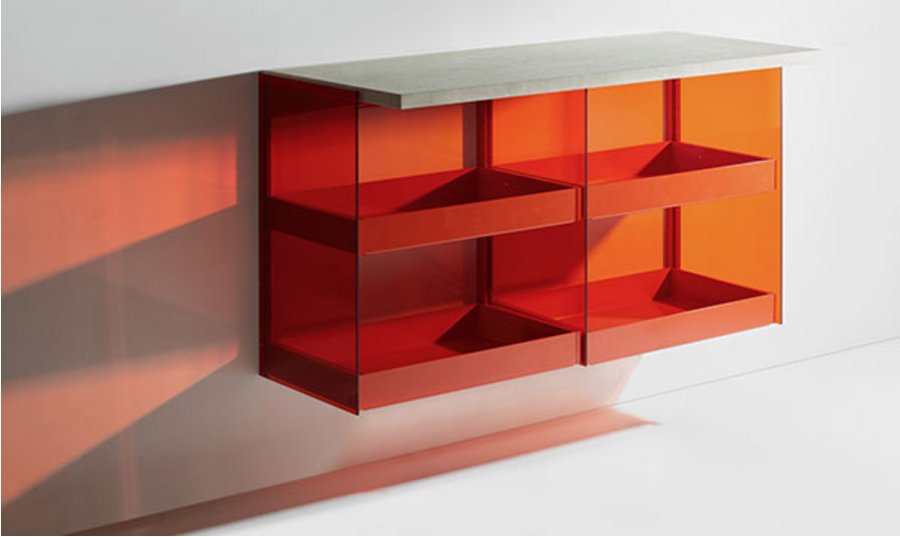
Photos: burgbad
For Burgbad, Stefan Diez has taken the classic bathroom furniture
concept apart and put it back together in a new way: instead of a range of
different carcasses or a collection of standalone pieces, the Munich designer
has developed a system of vertical mounting rails that are used to attach the
glass sides of the furniture to the wall. Additional elements like top panels
and shelves are then inserted to complete the unit. As a result, rgb can be used virtually anywhere: in the bathroom,
hallway, living room or kitchen – wherever users want to combine storage space
or work surfaces with transparency and colour.
The innovative mounting and construction system permits extremely
flexible use of the furniture modules. While this
system-based idea is reminiscent of classic furniture ranges, its
uncompromisingly vertical orientation gives the furniture a clearly defined, solitaire-like
character. The material defines rgb as a transparent
volume: the modules are assembled out of semi-transparent, coloured panes of
laminated safety glass and bring a new aesthetic to bathroom design.
Therefore, rgb
dispenses entirely with back walls and incorporates the existing architecture
instead. As a result, the tiled, wallpapered
or plastered surfaces, as well as their colour or pattern, become part of the design
concept. The overlapping colours mediate
between the wall and the furniture, creating harmonious secondary colours and
unique colour chords.
The perception of the RGB colour space is created by mixing the three
additive primary colours red, blue and green. The same mixing principle characterises Burgbad’s new collection – which
is how it came by its name. The semi-transparent furniture elements of the rgb
range enter into a dialogue with the space and create new colour impressions
depending on the lighting conditions. Whether the
room is illuminated by daylight, task lighting or LED-generated lighting
scenarios, rgb glows in brilliant colours and reflects the light in all sorts
of different shades.
But the
material doesn’t only add colour to the room, it brings transparency as well. The
visual impact of the glass modules is less overpowering and provides storage
space without a heavy look and feel. As a result,
rgb provides an ideal solution that’s particularly suitable for small rooms. The overall impression is neater as well:
regardless of what’s kept behind the wide-opening hinged doors, the
semi-transparent, coloured glass filters out all other colours so that only
monochrome outlines are visible. Thanks to this
effect, the items stored inside the furniture remain visible but look tidy and
homogeneous.
